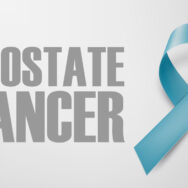1 IN 2 WOMEN WHO HAVE HAD A BABY WILL EXPERIENCE SYMPTOMS OF PELVIC ORGAN PROLAPSE WITHIN THEIR LIFETIME
What Is Pelvic Organ Prolapse:
Pelvic Organ Prolapse (POP) is when one or more of the pelvic organs descends into the vagina.
The pelvic organs include the bladder, bowel and uterus.
Women will report the feeling of a lump or bulge into the vagina and they may experience a sense of dragging or lower abdominal ache.
Why does it happen?
This may occur due to a weakening of the pelvic floor, the fascia of the pelvis and other ligamentous supports of the vagina.
POP may come about as a result of childbirth but may also be linked to constipation and chronic straining at stool.
What are the symptoms of POP?
Some women will notice nothing at all, whilst others will report:
- A feeling of pressure or fullness in the pelvic area.
- A backache low in the back.
- Painful intercourse.
- A feeling that something is falling out of the vagina.
- Urinary problems such as leaking of urine or a chronic urge to urinate.
What can be done to help?
Conservative management is recommended as the first line of treatment for POP, with the goal of avoiding the need for surgery.
After a thorough assessment your pelvic floor physio will devise a management program, specific to your needs. This may include:
- pelvic floor muscle training: a strong and co-ordinated pelvic floor is required to support the pelvic organs
- education on lifestyle factors:
- safe lifting technique
- position for opening bowels
- management of constipation
- exercise program: it is important to keep active and your physio will prescribe a program that is safe for POP
- Pessary: may be prescribed to support the pelvic organs
- Local oestrogen: referral to your GP to discuss the use of an oestrogen suppository, to assist with vaginal tissue quality
Will I need surgery?
In some cases where the prolapse is significant and conservative measures have failed a referral to a urogynaecologist may be necessary



No Comments